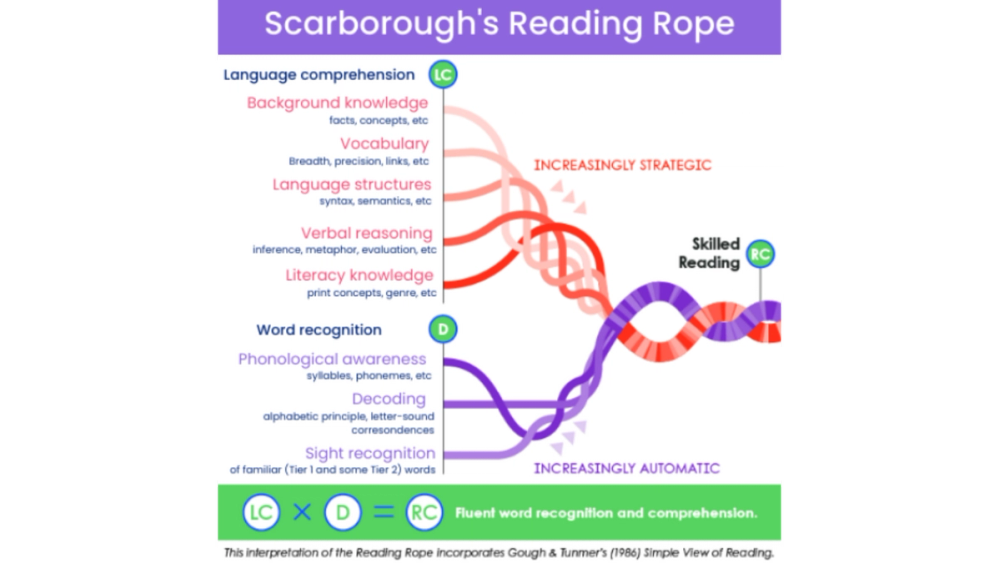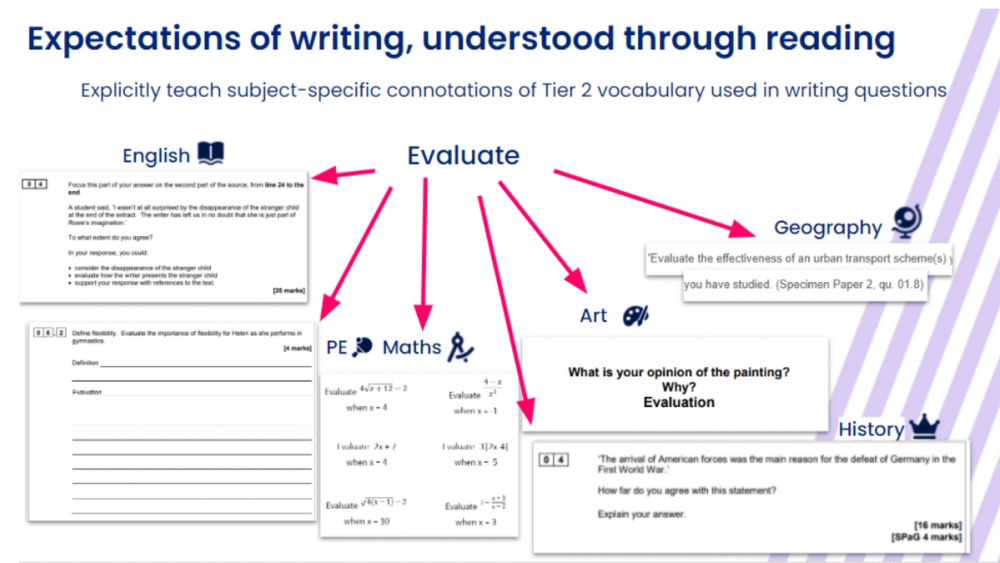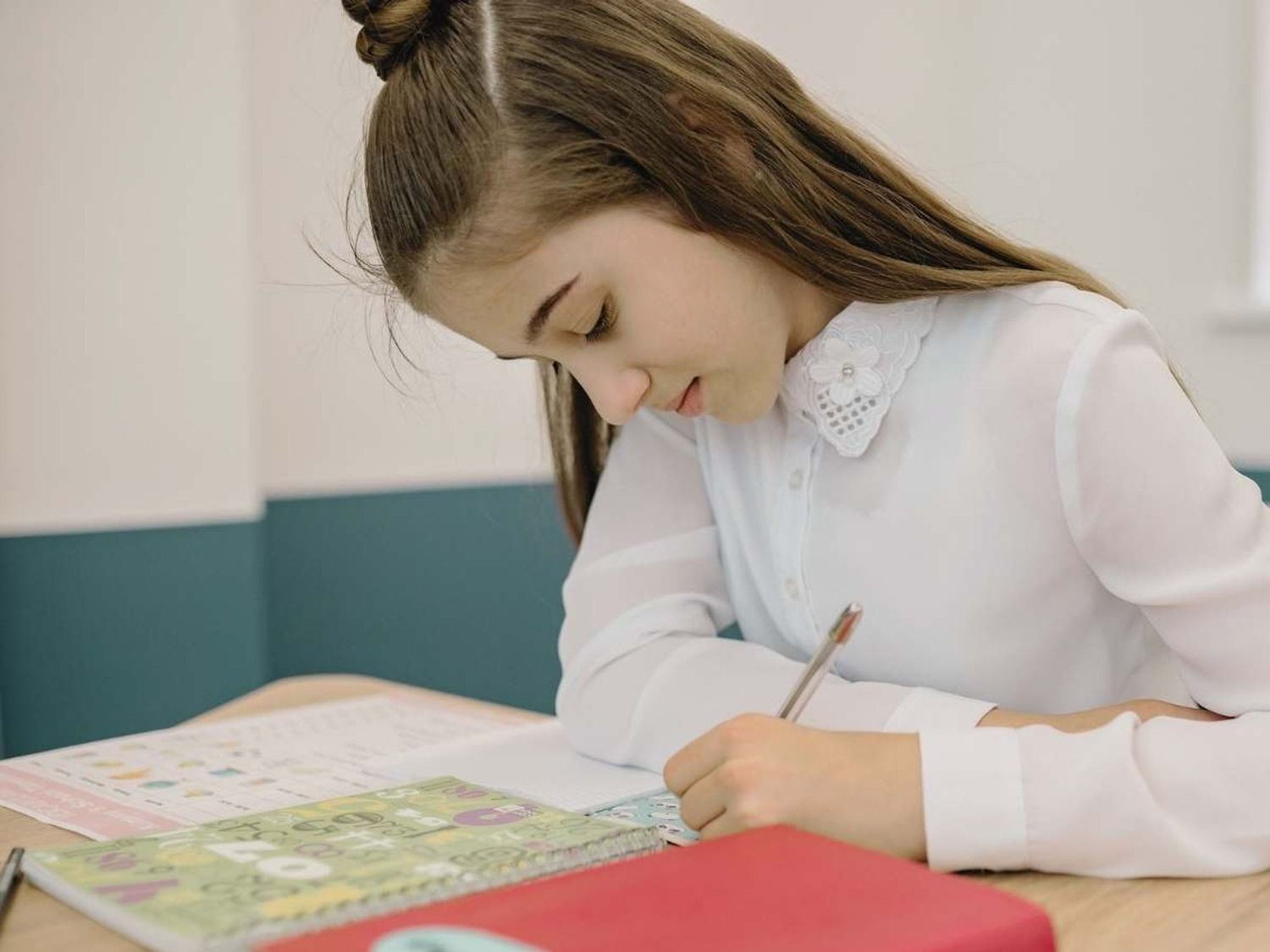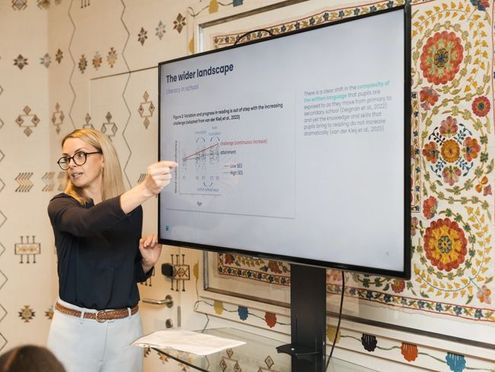In my webinar on the 24th of May 2022, I dove deep into the importance of combining writing instruction with reading in every subject, as well as helpful techniques you can implement in the classroom.
In my webinar, participants and I explored:
- In what ways can reading and writing instruction be combined?
- How can reading inform writing in every subject?
- So what practical steps can you take to impact your learners’ literacy?
Watch the full webinar
Why are writing and reading connected?
Reading and writing both draw on an overlap in required knowledge. When you connect the way you teach them, you tackle the complexities of both at once.

Scarborough's Reading Rope
Graham and Hebert (2010) found that teaching reading and writing instruction simultaneously leads to something they dubbed “overlearning”. When decoding elements of literacy (reading) are taught with encoding elements (writing), they strengthen one another.

"Writing can be a vehicle to improve reading." - Graham and Hebert
Not only do reading and writing boost attainment in the classroom, but they’re also essential life skills. Anything from reading the news, composing an email to writing a CV draws on that common body of knowledge - when you teach reading and writing simultaneously, you help prepare learners for life.
Combining writing instruction with reading in every subject
How can reading inform writing?
Writing tasks set while reading deepens learners’ comprehension of a text, helping them gather, organise and analyse information (Jacobs, 1999).
Strategies to strengthen this include:
- Note-taking
- Generating questions
- Drawing predictions and conclusions from a text
- Vocalising opinions
Learn about these strategies in more detail in our webinar/blog on disciplinary literacy.
How can writing inform reading?
Explicit teaching of writing skills, such as grammar, vocabulary, punctuation, text structure and the writing process, can reinforce a learner’s confidence when analysing a written text for these features.
Teaching learners how to write essays, critical analyses and summaries work different writing skills that will benefit them for life, as well as deepen their understanding of the text being read.

"Writing could get into corners that other teaching tools couldn’t reach." - Zinnser
What strategies can be implemented across the curriculum to combine writing and reading instruction?
To tackle the complexities in both reading and writing, thus benefiting both, teachers play a role in the explicit instruction of literacy, including vocabulary, spelling and grammar:
- Spelling should be actively taught
- Explicit grammar instruction
- Sentence crafting
- Targeted vocabulary instruction
However, though this top-level approach to connecting reading and writing has benefits, as shown by Graham and Hebert, you can deepen the impact on your learners through implementing disciplinary reading and writing strategies.
How disciplinary reading and writing are connected
The skills needed for disciplinary reading and disciplinary writing also draw from an overlap in required knowledge.

Expectations of writing, understood through reading
The writing strategies, background knowledge and subject-specific literacy skills learners need to read and write like experts must be taught explicitly in every subject. This involves Tier 3 vocabulary instruction and a disciplinary literacy strategy across the school.
However, before you think about which subject-specific strategies to implement, you should consider what good writing looks like in your subject. What do you expect to see from a confident writer? What indicators show you that your learners can write like experts in your discipline?
In my webinar, I compiled some ideas of what different subjects see as successful subject-specific writing and reading:
As well as this, in my webinar, I asked participants about their expectations for proficient subject-specific reading and writing. I highlight two that caught my attention, but involvement was brilliant across the board, with everyone sharing their unique ideas:
- "Before my students write an English assessment, I will show them high-level responses. We use the mark scheme to annotate how they can achieve the higher marks." Emily Jones, Henley-in-Arden School
- "We talk through the model as we complete it. All models are done in the form of an I DO, WE DO, YOU DO." Jerome Buddoo, Harris Academy Merton
Then, before implementing strategies, we need to find out where our disciplinary literacy journey currently sits. Find our disciplinary literacy audit tool here.
Once you have a clear understanding of how disciplinary literacy currently looks at your school, you can move onto implementing strategies that boost reading and writing in combination - in every subject! I listed some ideas in my webinar; for a full breakdown of what these techniques look like in practice, watch the full recording below.
Disciplinary reading and writing strategies:
- Modelling
- Live teacher modelling
- Peer modelling
- Academic reading within subjects
- Guided reading
Ellie's top two to take away
- Consider how texts you are reading in the curriculum inform the writing process and vice versa
- Use explicit writing instruction to benefit reading and writing
Combining writing instruction with reading can be a powerful thing. Not only does it boost outcomes for your learners, but it also gives you two-for-one on your lesson plans, saving your faculty time. When this is done across every subject, you can reap the benefits of your hard work across the curriculum.
To make it simpler for teachers to combine their literacy efforts across every subject, Bedrock Mapper allows teachers to share resources, structure a vocabulary curriculum across a school, and collaborate on making bespoke vocabulary definitions. If you’re trying to push for a whole-school literacy strategy, Mapper is a great resource to start with.
It’s clear from your fantastic responses that teachers are passionate about combining reading and writing. Thank you for all your brilliant contributions - some were really thought provoking!
Throughout the webinar, it was clear that reading and writing go hand in hand; tackling one improves the other, benefitting learners in the classroom and beyond. It was great to discuss how teachers are already tackling this tricky (but rewarding) dynamic in the classroom!




